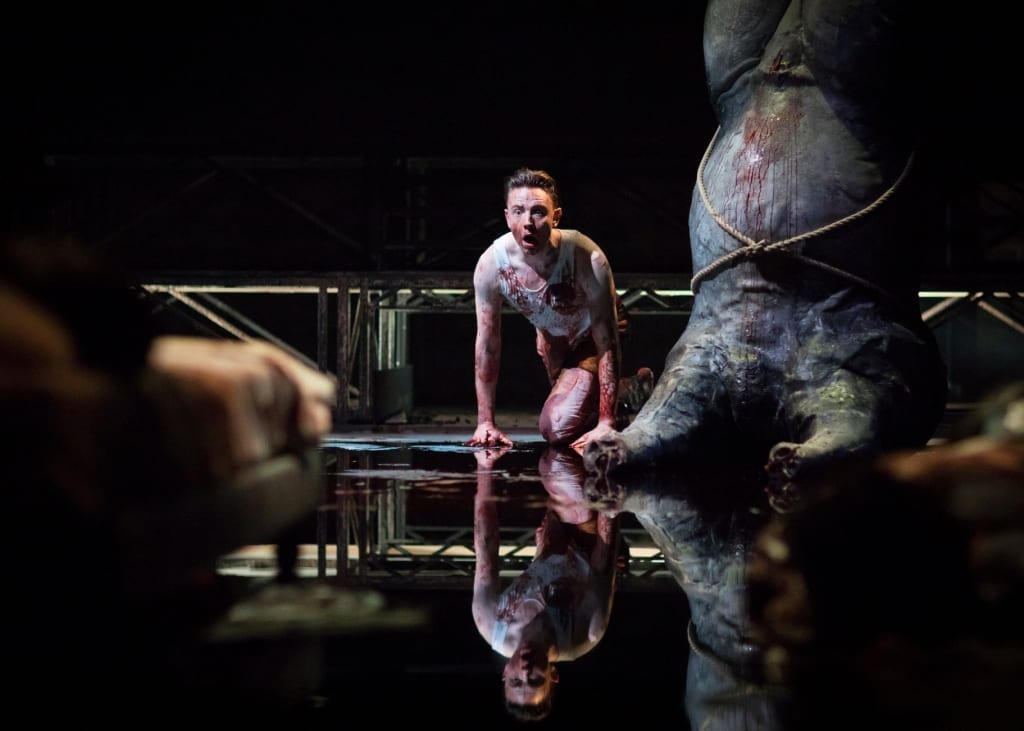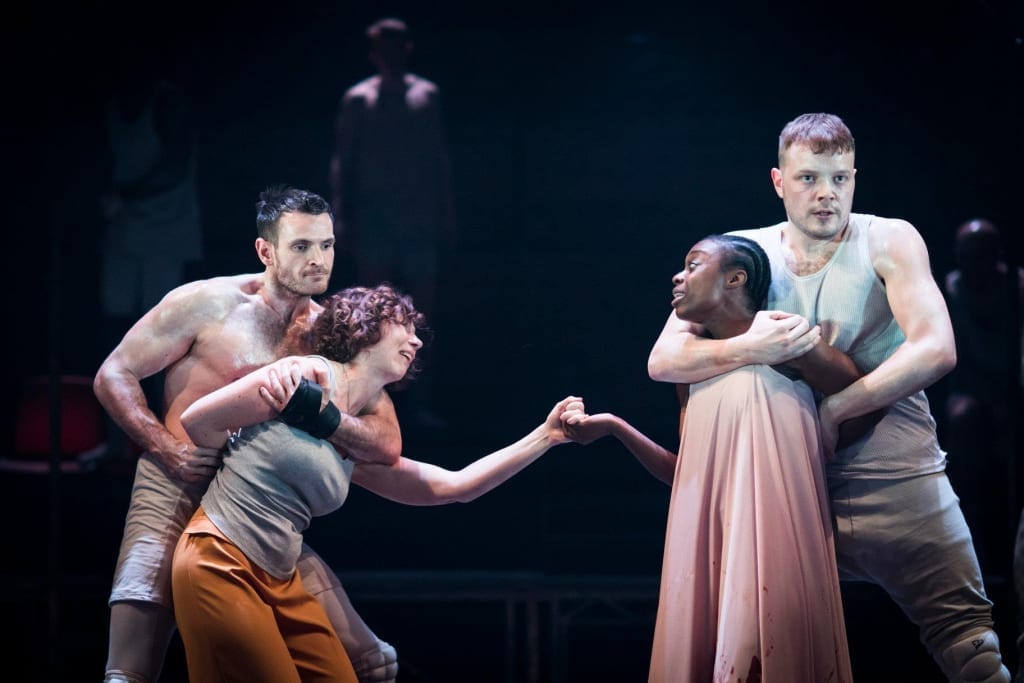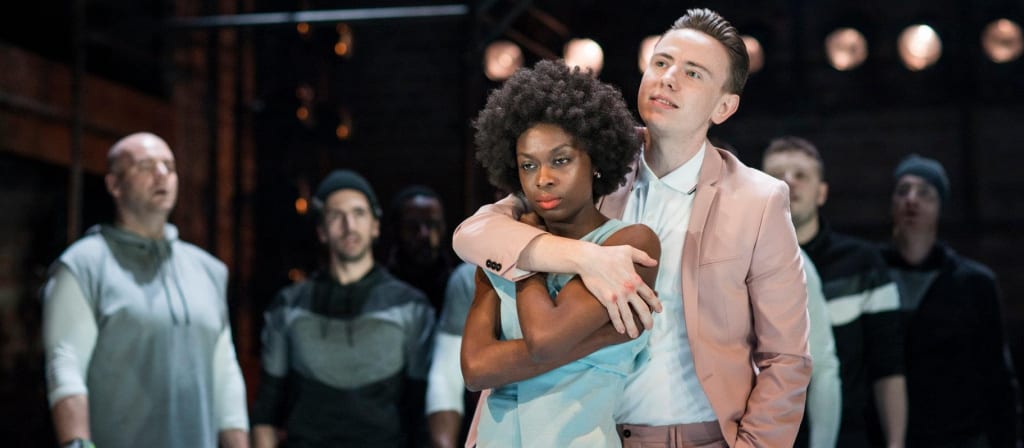The DUCHESS OF MALFI by John Webster is one of the most difficult plays of the Jacobean Era both to interpret and to direct. Uncut, it is a complex, many-layered and poetic masterpiece. The current RSC production is funky, modernised and emphatic in its portrayal of the blood and darkness at its heart. It is visually memorable. It is less good, however, on the black comic elements that usually shock the audiences into uncomfortable laughter and it under-represents the more lyrical and touching elements.
Directly Maria Aberg and designer Naomi Dawson have superlatively conceived visual metaphors and action that vividly emphasise the male carnage and eroticism that propel the story; and it portrays convincingly the various kinds of macho brutality suggested by the play, from the effete and somewhat incestuous portrayals of Ferdinand by Alexander Cobb suggesting the secular excesses of the aristocracy through the other brother’s unprincipled and self-serving Cardinal (played by Chris New) representing the corruption of the Church. The modern dress approach makes us also see how much Renaissance life resonates with our own day.

I felt, however, that the production is not so good at suggesting the layers of class rivalry and warfare in society. The approach to the play is very good in its suggestion of the independence and feistiness of the Duchess of Malfi in a masculine-dominated culture. The title character is strongly portrayed by the beauteous Joan Iyola. Her movement, her beauty and her singing voice are all compelling, haunting and unforgettable. She is a fine actress. The basic story tells how the widowed Duchess falls in love with and secretly marries her steward, Antonio, a man who is considered by her brothers to be beneath her in every way, in dignity and social level especially; that one brother is sexually jealous of her and that both brothers probably are worried about her power and wealth passing out of their hands. But the text is here somewhat cut to emphasize the Me Too aspects of the tale, the brutal and bloody self-righteous sense of entitlement of men; and though these aspects of the story are not only important but in many ways sufficient, I felt that the cuts undermined our fully being convinced by the impact of love on the Duchess, by understanding why she and her Antonio take the risks they do. There is also the question of how they kept the children hidden for so many years! Or why she doesn’t just openly marry her love and publicly defy her brothers. The scenes of love between the Duchess and Antonio are touchingly and convincingly played by Joan Iyola and a sweetly, gently attractive Paul Woodson, but there was a lack of balance with the horror story in which they ultimately find themselves.
The language and imagery of the play are often striking and even, at times, majestic; and the Duchess herself is a noble character in every sense of the word. Full credit must be given also to Amanda Hadingue as Cariola, the waiting woman and confidante to the Duchess; and to the acting and singing of Aretha Ayeh as Julia, the mistress of the Cardinal. The use of music is strongly atmospheric and suitably evocative throughout; and the choreography of the sinister, brutal courtiers conceived by Ayse Tashkiran that turns the men into a gang of terrifying, almost robotic thugs is visually stunning. Above all, equally compelling as the Duchess herself is the centrally powerful performance by Nicolas Tennant as Bosola, the malevolent servant who too belatedly develops a bit of remorse and conscience. I felt, however, that the nuanced textual clues that show Bosola’s sourness, bitterness and misanthropy earlier in the play are somehow not strongly enough conveyed.

This is a perfectly decent reading of the play and the contemporary tilt as well as the pools of blood that smear the stage and the actors (and sometimes splash onto members of the audience in the front row who are provided with blankets by the theatre just in case) are particularly apt to the telling of this story. The viewpoint of this production is strongly about a world of chaos, violence and disgusting misogyny in which untrammelled masculinity rules and destroys because of its nature, but it misses or ignores the subtexts that raise the tale of this duchess and her husband and children to a tragic plane above the social commentary. The Guignol is grand and the bloody revenge-tragedy element is almost overpowering, but this Duchess of Malfi doesn’t quite convey the underlying sense of tragedy that the play requires.

